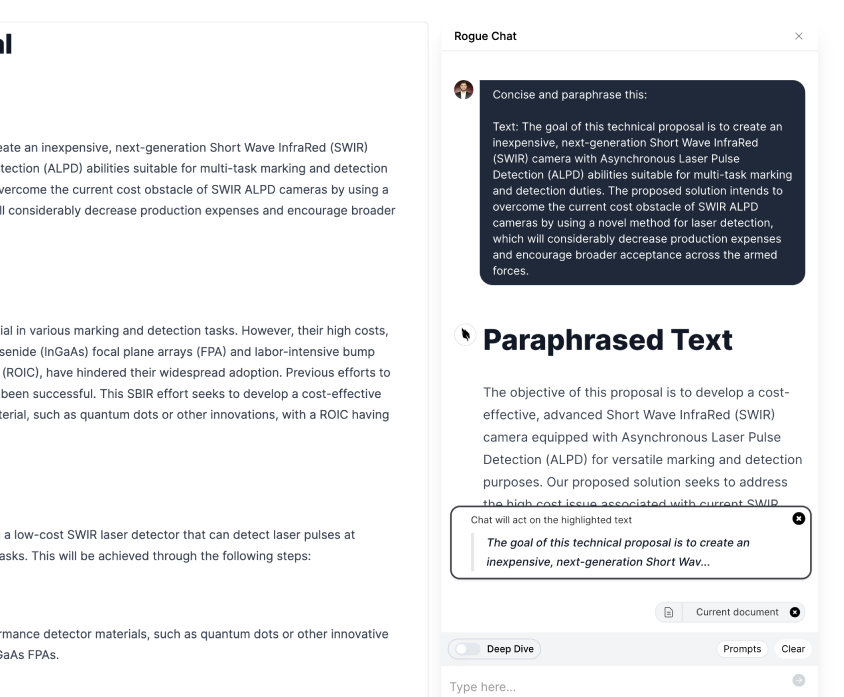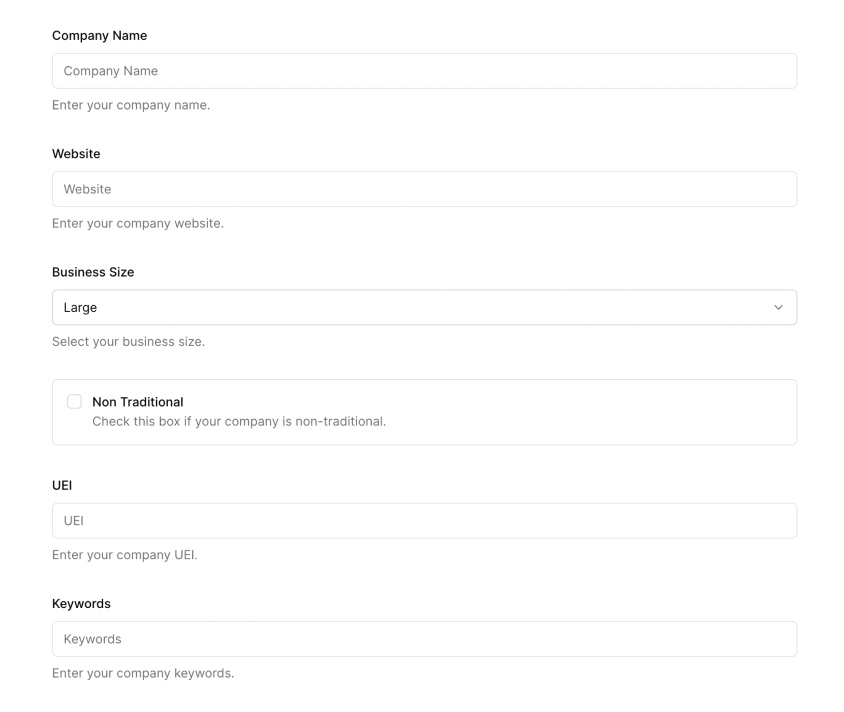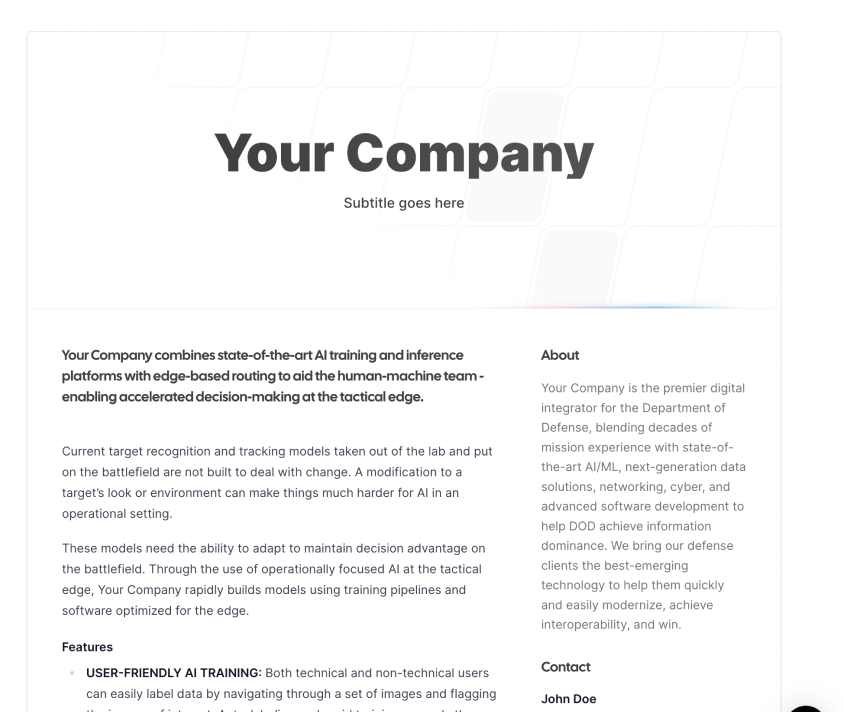
Module 4.e: AI for writing RFI and Sources sought responses
RFI’s and Sources Sought are Critical and Time-Consuming, we have an AI for that…
©️ You are free to adapt and reuse provided (1) that you provide attribution and link to the original work, and (2) you share alike. This course and all of its contents are the property of UseRogue.com and are offered under the Creative Commons BY-SA 4.0 License.
Introduction
Writing Request for Information (RFI) and Sources Sought responses is essential to having success in the bidding process. However, it can take a significant amount of time to craft these documents due to their importance—they need to be written with accuracy, detail, and clarity in order to give you the best chance at winning work. Fortunately, advances in AI-powered technology provide businesses with an easier way of creating documents. With AI-driven writing tools, companies can save time while still producing high quality RFI and Sources Sought responses that will make them stand out from the competition. Here are some simple steps to use AI to write RFI and Sources Sought responses.
Step 1: Give it Context
Copy the objective, background, and other relevant information from the RFI/Sources Sought and paste it into the chat in Rogue. This will give the AI the context it needs to generate the output. For example: "the Department of Homeland Security (DHS); Science and Technology (S&T) Directorate; Transportation Security Laboratory (TSL) to obtain information from potential sources regarding their capabilities to establish a Technical Support Services contract for Research, Engineering and Development (RE&D) and Developmental Test and Evaluation (DT&E)."
Step 2: Give it a persona
Tell the model who to act like and any important information to use, such as: "you are a government contractor writing a response to this requirement, explain how your company called "Rogue" has the knowledge, experience, and capabilities because of it's past work supporting DARPA, INS, and CBP"
Step 3: Tell it what to write
Attach to the end of the previous prompt that you want the model to write about, i.e. the services, supplies, etc that you need to provide, something like this: "Respondents shall have supporting capability to provide on-site and offsite support to the national security mission of DHS/S&T and TSL. The technical support services will assist the TSL in developing research and development technologies for current and new technologies both domestic and international. The support services shall provide specific technical expertise to DHS in accordance with technical criteria and disciplines determined by DHS."
Step 4: Make sure you get enough content
Often the model will spit out a few short, general paragraphs, if/when this happens, just say: "rewrite this, be very specific, technical, and verbose". You'll get a lot of content.
Step 5: Formatting
If you get the kind of content you want, you can now tell the model to put it in the right format, namely the response format, tell it something like this:
great, rewrite this into the following sections: 1. Introduction 2. Background 3. Technical Approach 4. Management Approach 5. Past Experience 6. etc
It will take the verbose content and spit it back out a little more concise and broken into your specified sections. After that, its all word smithing.
Conclusion
AI can be used to write RFI and Sources Sought responses more quickly than without, a lot of it comes down to prompt engineering. UseRogue.com is a purpose-built for this task and does all of these steps for you. Buuuuut...if you insist on doing it the hard way, at least now you know how.
GovCon GPT Masterclass
31 lessons
Sign up for Rogue today!
Get started with Rogue and experience the best proposal writing tool in the industry.



